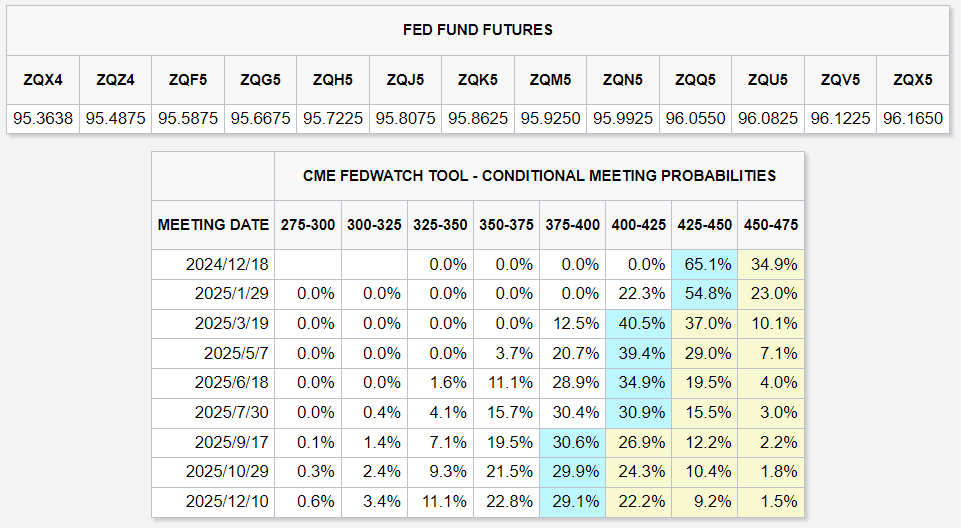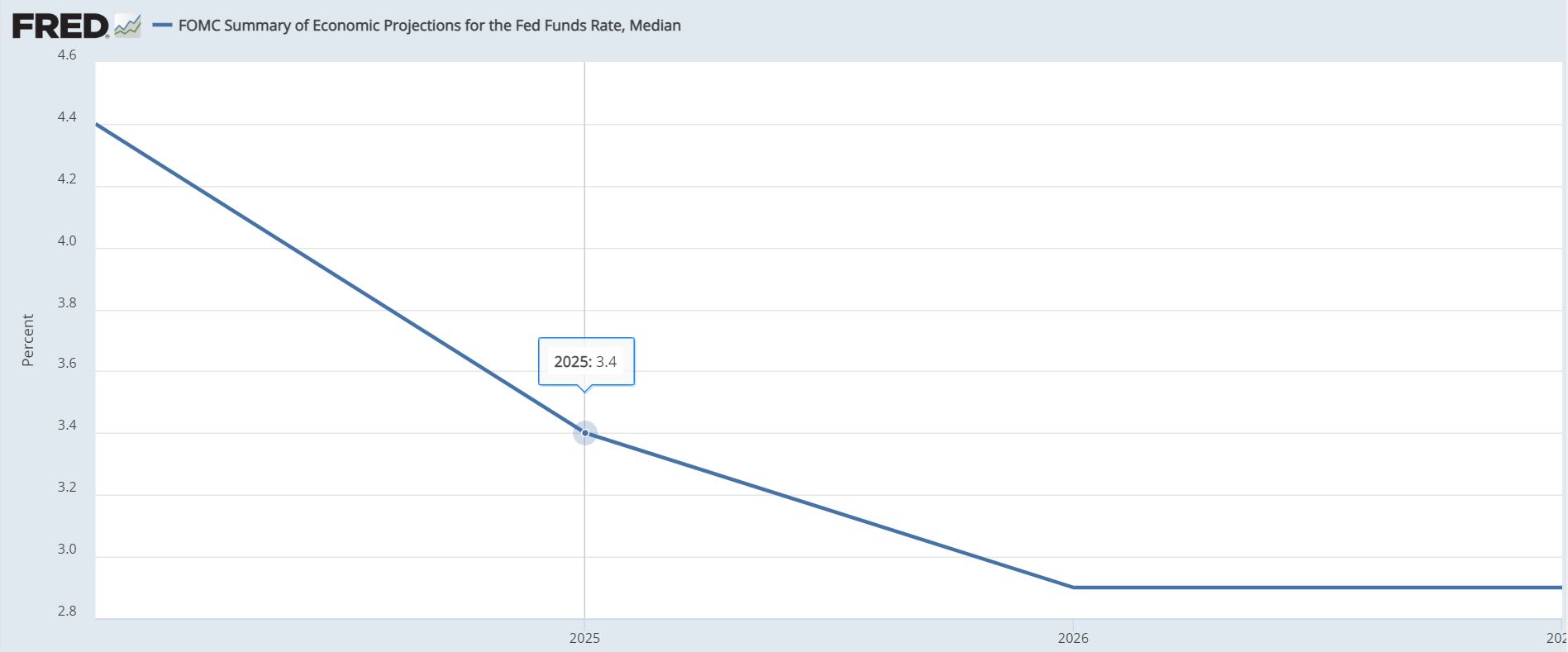The November 2024 FOMC meeting cut rates by 25 basis points as the market expected, with the target range adjusted to 4.5%-4.75%.The Fed adopted a more flexible monetary policy in response to the current economic situation.

In the meeting statement, the Federal Reserve's description of the job market from "slowdown" to "general easing", and at the same time the statement on inflation was also fine-tuned to remove the expectation that inflation will continue to decline
These changes reflect the Fed's assessment of the economic situation has been adjusted, but overall did not deviate from its objectives.
Future monetary policy will depend on changes in economic data rather than a predetermined path.This open-ended attitude suggests that the Fed will focus more on data-driven decision-making, while also waiting for the upcoming release of nonfarm payrolls and inflation data to support future policy decisions.
Rate cut expectations after the election results
After Trump won the election, the market's expectations for the Fed to cut interest rates changed significantly.In the short term, Powell pointed out that the election results have no direct impact on monetary policy, but in the long term, Trump's policy ideas will have an impact on economic growth and inflation, which in turn will affect the Fed's decision to cut interest rates.
Market expectations for the number of future rate cuts have contracted to three, respectively, in December, March and June of next year, each time 25 basis points, is expected to June 2025, the federal funds rate will fall to 3.75%-4%,dao 2.9% at the end of 2025, this change in expectations reflects the market's cautious approach to future economic data, especially in the case of the election policy has not yet been fully implementedunder.

If Trump pursues more loose fiscal policy, it may force the Fed to be more cautious in cutting interest rates to avoid economic overheating and upward pressure on inflation.
Therefore, the post-election economic policy changes make the future path of interest rate cuts there is a certain degree of uncertainty, the expected path of interest rate cuts in the short term is relatively clear, but there is the possibility of cutting the number of interest rate cuts in the medium term due to economic overheating.
The possibility of Fed tapering
According to recent data, the balance of overnight reverse repos has been significantly reduced, and the current gradual tightening of liquidity may prompt the Fed to phase out tapering in the near future.The liquidity situation in financial markets is an important basis for the Fed to adjust the pace of tapering.
If liquidity continues to be tight, it may lead the Fed to reconsider its tapering policy to prevent unnecessary volatility in financial markets.
The Fed introduced a new "reserve requirement elasticity indicator" tool in October to better monitor market liquidity.According to the current state of the indicator is close to zero, indicating that liquidity is still abundant, but the future may need to stop tapering to ease liquidity pressure.
In the November meeting, the Fed did not make a new statement on tapering, but with the increase in economic policy uncertainty after the election and the increase in market demand for liquidity, the Fed may gradually slow down the pace of tapering in the future, or even consider stopping tapering.The full cessation of tapering is expected to be an important signal for the Fed to relax its monetary policy.
Impact on Assets
As the Fed's monetary policy adjusts, the market's reaction to different assets varies.After Trump's election win, the market's expectations for risky assets have generally risen, and technology stocks and pro-cyclical sectors in particular are likely to see better performance.However, for the U.S. bond market, the realization of rate cuts may instead become a low point for long end U.S. bond rates, leading to a flattening of the interest rate curve.
The Fed's monetary policy path and tapering strategy will have different impacts on assets such as US bonds, equities, the US dollar and commodities:
U.S. bond market: in the short term, U.S. bond rates are expected to continue to rise due to the expectation of interest rate cuts and the potential boost to inflation from Trump's policies, but as the process of interest rate cuts advances, the long end U.S. bond rates may gradually fall back.The current mainstream view in the U.S. bond market is that rate cuts may become a high point for U.S. bond rates. $US10Y(US10Y.BOND)$ $iShares 20+ Year Treasury Bond ETF(TLT)$ $US30Y(US30Y.BOND)$ $iShares 0-3 Month Treasury Bond ETF(SGOV)$
U.S. STOCK MARKET: The Fed's rate-cutting cycle is positive for U.S. stocks, but tech and cyclicals could be affected by short-term volatility.Technology and pro-cyclical sectors will be the main drivers. $SPDR S&P 500 ETF Trust(SPY)$ $.SPX(.SPX)$ $.DJI(.DJI)$ $.IXIC(.IXIC)$ $Invesco QQQ(QQQ)$
Dollar exchange rate: the dollar's strength will benefit from the combined effect of Trump's policies and the Fed's interest rate cuts, the dollar is expected to remain strong in the medium term, but may be limited by the Fed's future intervention policies.The dollar index pivot is expected to be between 102-106. $Invesco DB US Dollar Index Bullish Fund(UUP)$ $USD Index(USDindex.FOREX)$
After the election of Donald Trump, the market's expectations for the path of interest rate cuts have changed and future monetary policy will be highly dependent on the performance of economic data.
Comments